Enda Loughman bought his home in Farranboley in Dublin's Windy Arbour in 2009. Now he is married with two kids, and the family has outgrown the property.
Located in a little slice of Dublin 14 secreted off Dundrum Road, the area was formerly farms supplying the Dublin market with produce and it comprises a lot of single-storey detached homes with decent-sized gardens.
It was rising property prices that enabled the family – his wife, Jenny Belton, and their two sons, Bert (8) and Ted (5), to make the move. “We built in the garden before we put the house on the market, selling it in 2017,” Enda says.
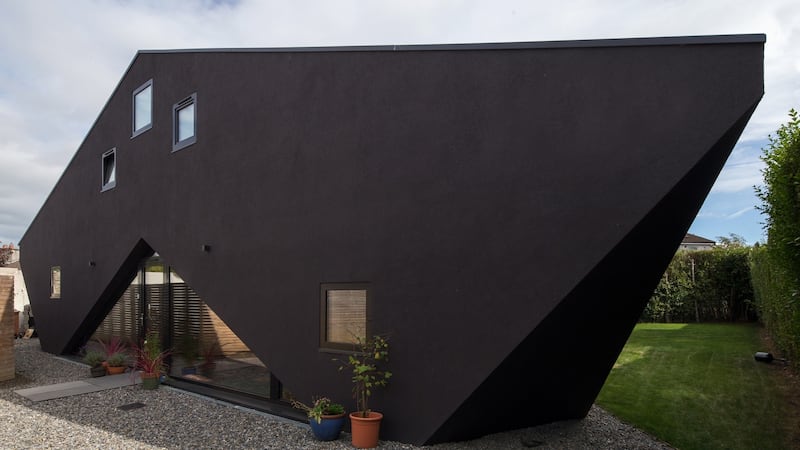
His approach to the idea was, he says, "very nerdy" but also clear. He built a three-dimensional model using the computer software programme SketchUp, used by architecture and interior design practices but in film production design too. Enda had already used the software to view sets for his films and TV ads, as well as his forthcoming supernatural comedy Extra Ordinary starring Maeve Higgins and Saturday Night Live's Will Forte. This helped show him what the house would feel like physically .
For the architects the proposal allowed them to creatively address the issue of suburban sprawl. "The idea was to increase density in a horizontal fashion. Land is so scarce yet there is so much untapped space in suburban gardens," explains Andrew Griffin, founding partner of Urban Agency, recently nominated for the prestigious 2019 Mies van der Rohe award. "We're building big suburbs outside the M50 rather than densifying within the city limits. Our inner suburbs have big back gardens and garages all offering habitable options."
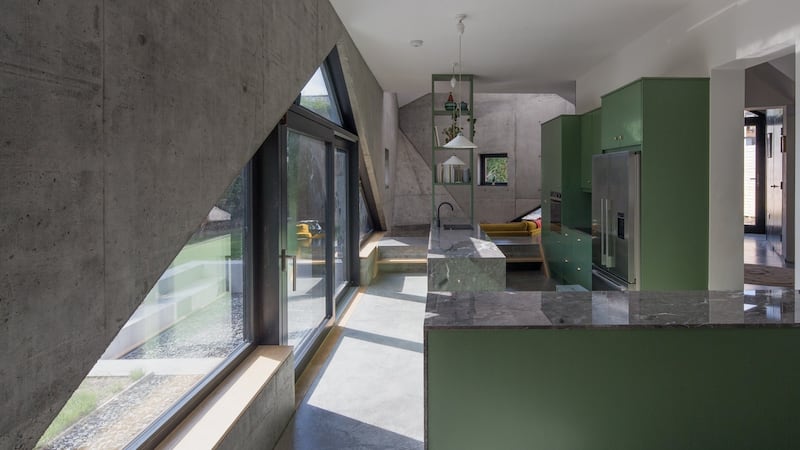
This thinking isn’t new, he says. “The planning register shows that many homeowners have already thought of this, especially when the location you live in is close to the Luas and schools.”
“By building in back and side gardens you can increase suburban housing stock,” says founding partner Maxime Laroussi. Other architects have explored this concept from A2 Architects’ mews houses built in the 1990s on Dublin 7’s Lucky Lane, to architect Darragh Lynch, who got six neighbours in Malahide with vacant plots in their rear gardens to join forces and obtain planning permission for six houses on Church Mews.
Visual brief
The house’s triangular structure was inspired by the site, which itself was a triangular-shaped plot at the end of the garden. Its morphology comes from the pitched roofs of the area and its houses, barns and sheds.
The triangle is one of three primary forms used in architecture, from early Egyptian pyramids to Bauhaus, a form used to great effect by the recently deceased architect IM Pei. It is also a composition device used by many Renaissance painters including Leonardo Da Vinci, Michelangelo and Raphael, Laroussi explains.
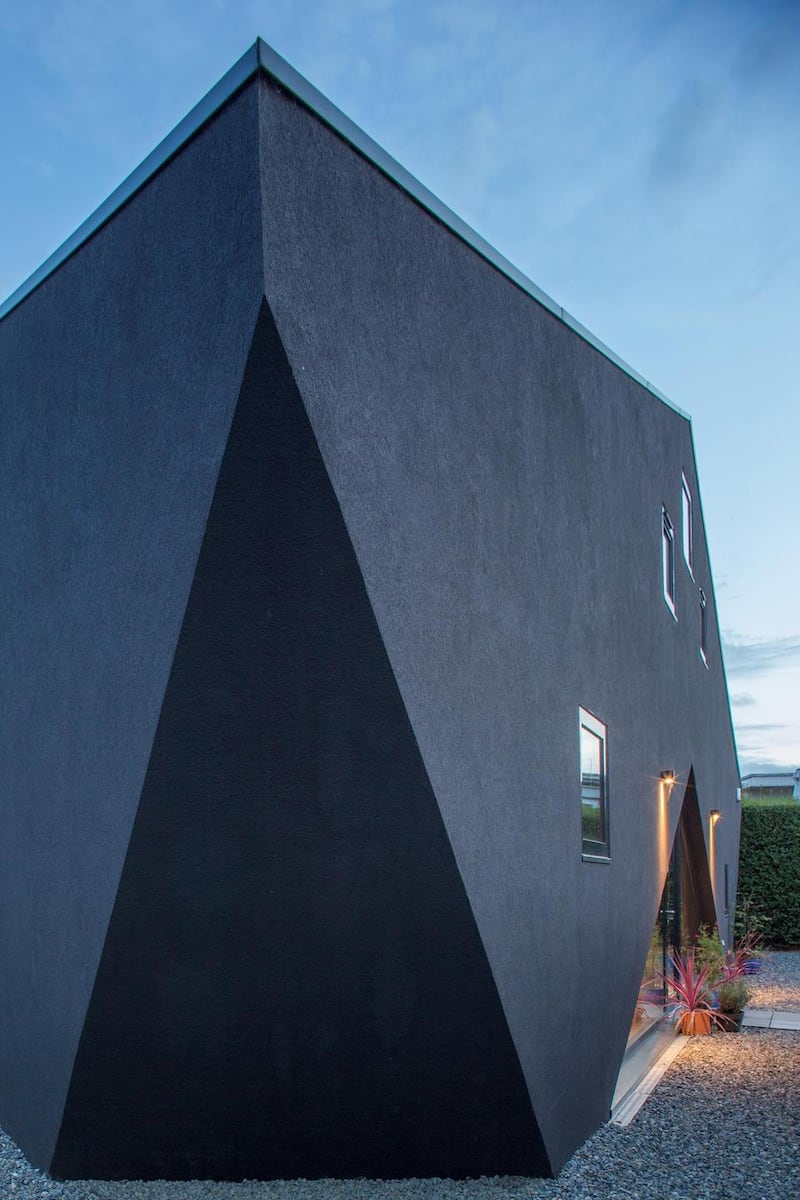
To be handed a visual brief like that was pretty inventive, Griffin recalls. “It was very specific. He wanted a black exterior, concrete, with level changes inside and all under a pitch roof that would fit in.
“If you look at design blogs and magazines, black is not that unusual, but actually the exterior isn’t quite pitch black but rather a deep rich brown, the colour of a peat briquette,” says Loughman.
Interior design
So what’s it like to live in? From the street the house appears to be set quite low. Its triangular form gives a larger floor space at ground level, with ceiling heights ranging from the standard 2.4m to as high as 4.5m in some parts. Its staircase is enclosed at the centre of the structure.
The livingroom is really a conversation pit, an idea that many thought had been relegated to the last century. It is low-set yet has lofty ceiling heights, creating a cosy and really accessible space. Its punchy yellow sofa was custom-made to fit the space by Tom White of Navan-based Sofas By Design.
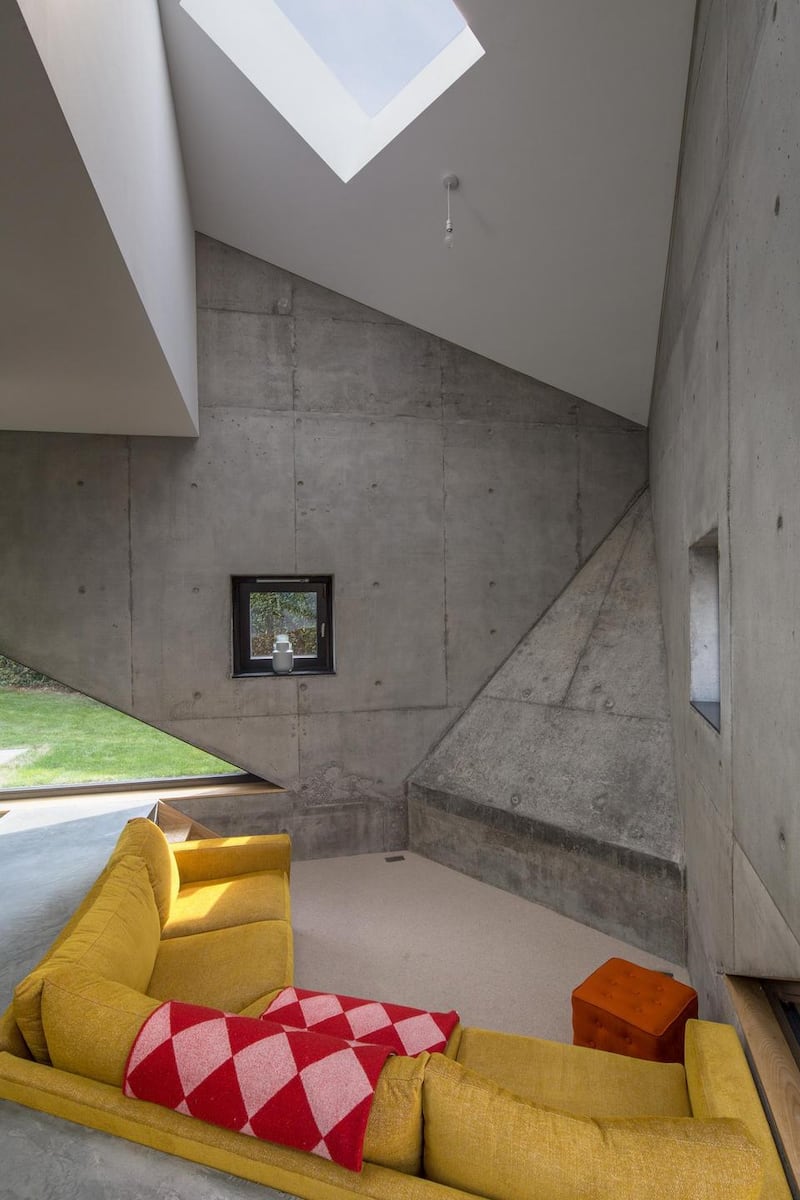
The kitchen was done by the builder and hand-painted for a more textured finish. It has marble waterfall countertops.
Painted tongue-and-groove timber panelling on the throughway linking the sitting and diningrooms creates a very contemporary feel.
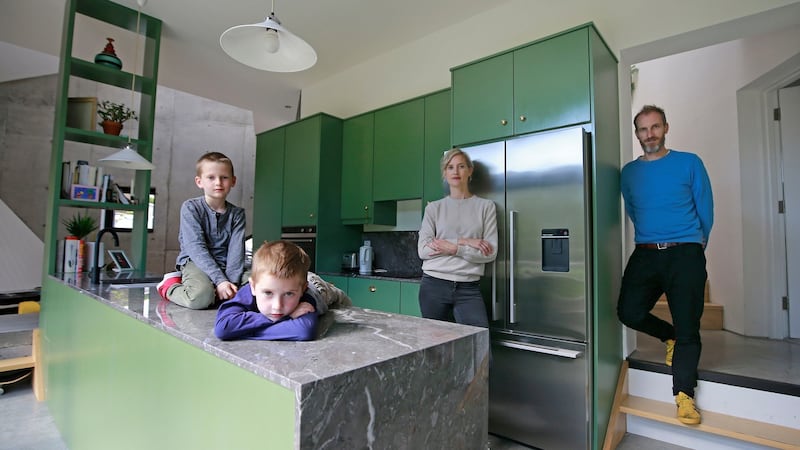
“We used familiar and affordable building materials but in an interesting way to make it a little bit special,” Griffin says. The builders, C& D Carpentry and Construction, were also on board. A synthetic rubber roofing material was used on the roof. EPDM (Ethylene Propylene Diene Terpolymer) can be matched to the self-coloured render on walls.
The three-bed home runs to a sizeable 180sq m (1,937sq ft) and has a triangular staircase housed at its core. The ground floor footprint is about a third larger than the first floor where there are three bedrooms with a play area leading off the kids’ two rooms and a glass-walled office overlooking the dining area below.
So, how did the couple collaborate on their dream house? “I probably had more of a say in it,” Loughman says. “Jenny agreed with most of it. We have quite similar tastes, although she wasn’t convinced by the concrete at first.”
Urban-agency.com
teamdaddy.com
Share your home story: Have you recently extended, renovated or built your home? If so, we'd love to hear how you got on. Please email: homeanddesign@irishtimes.com











